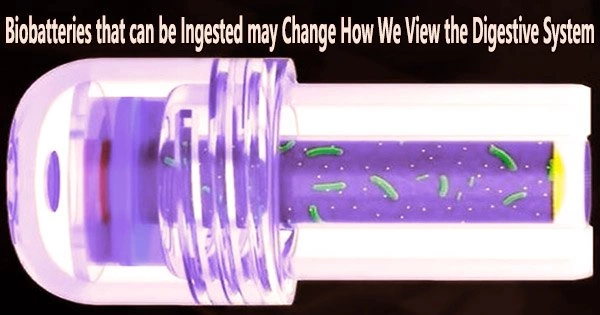Cell phones, smart watches, iPads, and countless more devices that operate outside the body have all been created by IT corporations. Inside the body, though? That’s obviously trickier for several reasons, but power for a device is a big one.
A solution has been developed by biobattery researchers at Binghamton University, State University of New York, for the small intestine, which is difficult to access and wraps around the human gut for an average of 22 feet.
“There are some regions in the small intestine that are not reachable, and that is why ingestible cameras have been developed to solve this issue,” said Professor Seokheun “Sean” Choi, lead researcher and faculty member in the Department of Electrical and Computer Engineering. “They can do many things, such as imaging and physical sensing, even drug delivery. The problem is power. So far, the electronics are using primary batteries that have a finite energy budget and cannot function for the long term.”
The Watson team’s approach is based on discoveries made by Choi over the previous ten years about the use of bacteria to generate modest quantities of electricity that can power sensors and Wi-Fi connections as part of the Internet of Things.
Other options inside the small intestine are less viable: Conventional batteries may be dangerous, wireless power transfer from the outside of the body is ineffective, temperature differences are insufficient to capture thermal energy, and intestinal movement is too sluggish to provide mechanical energy.
Choi’s biobatteries, on the other hand, make use of microbial fuel cells that contain Bacillus subtilis spore-forming bacteria that are dormant until they enter the small intestine.
There are some regions in the small intestine that are not reachable, and that is why ingestible cameras have been developed to solve this issue. They can do many things, such as imaging and physical sensing, even drug delivery. The problem is power. So far, the electronics are using primary batteries that have a finite energy budget and cannot function for the long term.
Professor Seokheun “Sean” Choi
“How do you make your micro-fuel cell selectively work in the small intestine? We use a pH-sensitive membrane that requires certain conditions to activate,” Choi said. “When you look at our gastrointestinal tract, the esophagus has a neutral pH, the same as the small intestine, but the transit time is only 10 seconds. It will not activate in this area, and it will never work in the stomach because the stomach has a very low pH. It only works in the small intestine.”
Choi is aware that some people may be reluctant to consume bacteria, but our bodies are already teeming with harmless germs that support digestion and other bodily processes.
“We use these spores as a dormant, storable biocatalyst,” he said. “The spores can be germinated when the nutrients are available, and they can resume vegetative life and generate the power.”
Although this research has just been published, Choi and his students already are looking ahead to improving the capsule-sized biobatteries. It takes up to an hour for the fuel cell to fully germinate once it enters the small intestine; a faster rate would be preferable.
The cell’s power density of about 100 microwatts per square centimeter is sufficient for wireless transmission, but ten times more might open up a lot more possibilities. The batteries would also need to undergo testing on both humans and animals, as well as biocompatibility research.
Low-level microbial fuel cells have a variety of potential applications, including electrical stimulation devices, medication delivery systems, and biological and chemical sensors, according to Choi.
“I believe that our micro-fuel cell has a huge potential, but we have a long way to go,” he said.
The research team included PhD students Maryam Rezaie and Zahra Rafiee.





